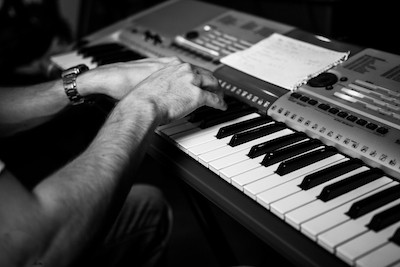What’s easier: learning to play the piano by ear or focusing in on learning to read music?
That, of course, depends on the person.
In most cases, parents today take the path of teaching their kids to read music. They start young by putting their kids in piano lessons. And most teachers prefer to teach visual skills and music comprehension rather than focusing in on playing by ear.
To play by ear, you have to work on developing two major skill sets: listening comprehension and aural skills. 
Can you recognize the chords and notes that you hear in a song?
Can you reproduce it quickly and without error?
Developing the ear doesn’t mean sitting down at the piano and tinkering around with the keys until you have the music correct. Instead, true aural skills involve understanding music well enough that you can sit down and play, knowing exactly which keys to press to play the song.
And that takes skill.
It takes extensive knowledge of music theory. You have to understand scales, chords, and how music is created to be able to put it together quickly in your mind, and transfer it to your fingers on the keyboard.
If you want to be able to play by ear, that means increasing your knowledge of music theory. It also means learning that the keys are not the notes. A-sharp is B-flat on the piano keys. But that doesn’t make them the same note. They may sound the same, but they have different meaning in music. And if you don’t have an understanding of how they fit together, you’ll never be able to transfer that to the keyboard.
It takes training. It takes studying. It takes practice.
Have you trained yourself to play by ear?

